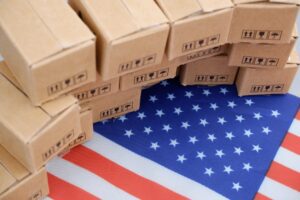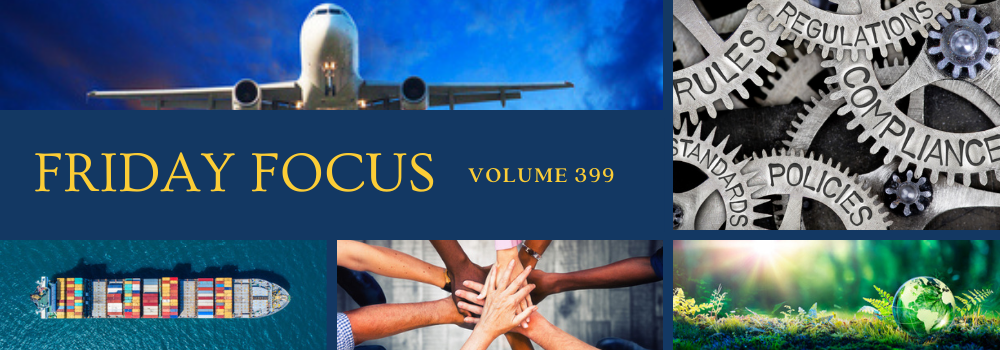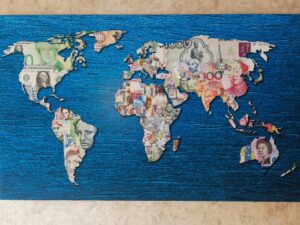A Proactive Approach to Navigating Geopolitics Is Essential to Thrive
Geopolitical conditions have always influenced companies’ fortunes, but at least since the end of the Cold War, they’ve tended to take a back seat to macroeconomic, strategic, and operational concerns.
No longer.
Business leaders today view geopolitical tensions as the biggest risk to economic growth, according to the latest McKinsey Global Survey on economic conditions. Regional conflicts and international trade divergences have intensified in recent years, testing the resilience and strategies of multinational corporations. For instance, tariffs on goods exchanged between the United States and China have increased up to six times since 2017, and globally, trade interventions have surged 12-fold since 2010.
Given their fiduciary responsibilities, business leaders understandably tend to focus primarily on the downsides of such shifts, asking questions such as: Which of my products and operations are geopolitically sensitive and how does this sensitivity differ by region? At what point do I need to switch suppliers? How much of my workforce requires visas and how might visa approval challenges affect our productivity in certain parts of the world?
It is important to craft risk and response plans to address those and other potential downsides. But even as they improve their resilience to shocks, business leaders should focus on opportunities for risk-adjusted value creation. They should consider tailoring their growth strategies, core business operations, technology stacks, talent footprints, capital asset portfolios, and organizational capabilities with an eye toward thriving and not just surviving.
Business leaders should be asking themselves questions such as, will our competitors’ products be more or less expensive than ours because of new tariffs and taxes? When and how can we align our business with trade flows into new corridors? What new economic and security alliances could also create opportunities for us to grow or to change our cost structure? What industrial policy incentives might present significant growth potential for us? How is our risk-adjusted cost of capital changing across geographies and how might we optimize our capital deployment?
When organizations view geopolitics through a value-creation lens, they can realize outsize benefits. Consider these examples:
- A North American medical-devices company that shifts its manufacturing operations and supply chain to Mexico from another country to take advantage of trade agreements could save 15 to 25 percent on operating costs while increasing its operating resilience.
- A payments company that moves into the Asia–Pacific region by 2027 could access an additional $1.5 trillion in revenues.
- A semiconductor company that changes its sales and marketing strategy to include targets in the Taiwan-to-Singapore corridor could gain an additional $47 billion in market share.
By contrast, business leaders who disproportionately focus on the downsides can find themselves paralyzed, perpetually on guard for the occurrence of high-severity but low-probability geopolitical events. Instead, they should be systematically and continually assessing the full complement of value drivers across trade, economic, and industrial policies and in the areas of defense and security. These include tariffs, the provision of subsidies in support of national industrial policies, and governments’ bias toward investing in geopolitical allies across supply chains, talent, technology and data, capital deployment, and other business domains.
|
11/12/2024 | Cindy Levy, Shubham Singhal & Matt Watters | McKinsey & Company |
|
|
Can Tariffs Be a Good Thing? |
In a day-after-the-election briefing to a group of business executives on what the trade policy of a second Trump presidency might look like, the question was asked, “What would an example of a good tariff be?”
The answer is the same one that the 16th century Swiss physician and alchemist Paracelsus gave about dosages of medicine—given in moderation and for the right purpose, they can help heal. Given in excess, they become a poison.
Special additional tariffs are part of current trade remedies, adopted as a matter of national policy and embedded in domestic US law and international agreement. They are recognized therefore as “good” by Congress even if hardly ever welcomed by the measures’ opponents. Additional tariffs are mandatory to offset dumping (sales at less than fair value) and foreign subsidies where material injury is found. And where there is serious injury, the president is given discretion to impose additional tariffs under a safeguard provision. The policy behind the use of these remedies is not just one of equity. The provision of trade remedies may well have been necessary to allow a system of generally open trade to survive with sufficient domestic political support.
There is a second grouping of tariffs (and subsidies, which are another form of protection) that was considered good by the Biden administration and perhaps by a majority in Congress. These measures were selective. A key US national security objective during the Biden administration was to assure that the United States had the ability to manufacture leading edge semiconductors. This was done through subsidies in the CHIPS Act and through tariffs imposed under separate presidential authority. Similarly, climate change and geopolitics were seen during the Biden White House as worthy objectives for support. This accounts for the current additional tariffs and subsidies for batteries, electric vehicles (EVs), and the like.
The use of tariffs (and subsidies) is not free of controversy, however. The tariffs on EVs and batteries slow the ability of the country to meet climate objectives. At the other extreme, whether climate change is seen as a problem or even acknowledged by the next administration is unknown.
President Trump went far beyond suggesting the selective use of tariffs in his campaign. He spoke very often of imposing a blanket tariff of 10 or 20 percent on all imports, with a 60 percent tariff on Chinese imports. The blanket tariff of 10 or 20 percent would not readily be avoided unless an adequate domestic supply of the goods in question can be produced domestically at a higher price due to the tariff or a sufficient bureaucracy is installed from which to seek exemptions from the tariff.
|
Quotas Can Work Better Than Tariffs to Reshore Production |
This piece includes excerpts from Jeff Ferry’s article “Quotas Can Work Better Than Tariffs to Reshore Production”.
Tariffs have the distinct advantage of raising revenue for the government. Last year, the U.S. government collected $80 billion in tariff revenues. But tariffs have the disadvantage that they can be nullified by price cuts by the foreign exporter. This is especially true if a foreign government is willing to subsidize its export industries. China has built its manufacturing sector through widespread subsidies, some public and some clandestine, including free land for manufacturers, cheap government-backed bank lending, and other methods. If the U.S. implements a tariff of 25% on any product line, the Chinese Communist Party government can enable its exporters to cut price and absorb the tariff through a variety of policy levers.
Even without subsidies, economies of scale can make it profitable for foreign producers to cut prices in response to a tariff. It can, for example, be more expensive to shut off a furnace or a semiconductor fabrication facility than to keep it running. Therefore, as long as the product coming off the line can achieve a price that pays for the cost of the materials, a producer can find it worthwhile to keep producing and sell the output in a foreign market at a price 25% or even 50% below the price in its home market.
Quotas avoid all these problems by setting a firm limit on the volume of imports in any product category. This enables the government to allow in sufficient imports to meet domestic demand while the domestic industry ramps up production. The quotas can be varied as industry capacity changes. This can safeguard against shortages while encouraging domestic producers to invest and ramp up production.
There are three main types of quotas: (1) absolute quotas, (2) tariff rate quotas and (3) voluntary quotas.
Absolute quotas are a firm limit on imports, typically set in volume, such as tons of imports per year. They have the advantage of allowing domestic firms to plan for the future because they can have more confidence about the market opportunity for several years to come. If imports are strictly limited by quota, then domestic producers can assess the likely size of the domestic market and can invest and hire workers to meet that expected demand. Tariffs don’t deliver that sort of predictability because in today’s world, China and many other exporting nations can react to tariffs by cutting their export prices or by challenging tariffs with legal action.
A firm quota can control imports more reliably than tariffs. The quota arrangements on steel imports agreed with South Korea, Japan, and the United Kingdom have done an effective job of keeping steel imports from those nations flat to slightly down.
10/24/2024 | Jeff Ferry | Coalition for a Prosperous America
What Is Bretton Woods? The Contested Pasts and Potential Futures of International Economic Order
|
Following is an excerpt. The full piece is linked below, and here.
Four Definitions of Bretton Woods
The first definition takes Bretton Woods as a specific configuration of institutions established to manage the global economy and “win the peace” after the Second World War—namely the IMF and the International Bank of Recovery and Development (the precursor to the World Bank). This appears to be the most straightforward definition, but things become complicated upon reflection. The liberal trading regime is often considered essential to post-1945 economic multilateralism, yet its origin cannot be traced directly to the Bretton Woods Conference. The initial agreement focused on the international financial architecture as well as issues of recovery and reconstruction. Discussions of international trade were deferred to separate negotiations over the Havana Charter and its ambitious vision to create an International Trade Organization. Opposition in the U.S. Congress and the British parliament upended this plan, meaning that trade liberalization occurred under the auspices of the less comprehensive General Agreement on Trade and Tariffs (GATT). Nevertheless, many continue to see the GATT/WTO regime, alongside the IMF and the World Bank, as part of the Bretton Woods regime and as byproducts of an international economic bargain forged under U.S. hegemony. Viewing Bretton Woods through the prism of institutions created at the onset of the postwar period makes it possible to treat it as something that remains largely intact.
The second definition treats Bretton Woods as a consensus regarding the proper relationship between international trade and finance in structuring the global economy. For example, the political scientist Eric Helleiner stresses that the initial agreement secured the renewal of a liberal trade regime by allowing states to limit international capital flows. From this perspective, Bretton Woods enshrined a rare point of consensus between Keynes and its other leading architect, Harry Dexter White. It granted states an “explicit right to control all capital movements” as a way of ensuring the efficacy of their domestic economic policies. Fear of footloose capital, alongside the early postwar experience with the Marshall Plan, solidified a transatlantic consensus as to the need for public management of international capital movements. Limits on capital flows allowed states to effectively pursue full employment policies, and the resultant macroeconomic stability promised to reinforce their commitment to the multilateral trading system. The architects of Bretton Woods anticipated that a stable and steadily expanding international trade regime would secure broadly distributed economic benefits as well as a peace dividend. On this definition, the arrangement continued until a persistent shortage of dollars generated pressure in the late 1960s and early 1970s to lift capital controls and accelerate financialization of the world economy. This led to the emergence of the eurodollar market and eventually to a much different set of prescriptions to liberalize cross-border financial flows. It also prompted the Nixon administration’s decision on the dollar’s convertibility to gold. According to this understanding, Bretton Woods lasted as long as the consensus held to limit flows of capital to rebuild a viable liberal system among trading partners.
The third definition treats Bretton Woods as a set of ideas about the proper relationship between the international economic order, the state, and the market—suggesting it is a norm-governed consensus rather than any particular institutional arrangement. From this perspective, Bretton Woods’ core consisted of an international economic order in which social democracies retained a significant degree of autonomy in their domestic economic governance, thus guaranteeing their ability to enact policies in pursuit of full employment, macroeconomic stability, and essential regulatory goals. At the same time, the consensus ensured coordination to manage market pressures, like flows of hot money, and potential backlashes to expanding markets, like the risk of spiraling protectionism—neither of which could be addressed successfully through unilateral means. In this view, Bretton Woods and postwar social democracy were mutually constitutive. It produced an international economic framework that prioritized the efficacy of social democratic governance by ensuring that the state could manage various market dislocations. At the same time, well-functioning social democracies were expected to maintain support for economic multilateralism and give clear direction to adaptations in the Bretton Woods institutions as new circumstances arose. This offered to secure the continued benefits of international trade for members of the multilateral system as well as the durability of a common economic bloc among like-minded states. According to this understanding, the Bretton Woods era lasted as long as the international economic regime legitimized social democratic forms of governance (and vice versa).
The fourth definition takes Bretton Woods as a set of ambitions for a better functioning and more just international economic order that never took hold. Its proponents point out that wartime negotiations and postwar realities watered down the role of international institutions as envisioned by the architects of Bretton Woods. This meant its seemingly fundamental commitments were never realized. For instance, although Keynes envisioned the creation of an international currency managed by the IMF to facilitate clearing and to ensure sufficient liquidity for all members, the dollar ended up playing this role. Likewise, Keynes’s initial vision assumed that surplus countries would automatically bear some costs of adjustment to correct for global economic imbalances. This plan represented a drastic departure from the gold standard, which had imposed deflationary pressures on deficit countries to maintain stable exchange rates. But these more radical proposals were struck from the plans for the IMF. In a similar manner, the failure to launch an International Trade Organization marked diminished ambitions for the governance of trade. The GATT’s focus on lowering tariffs formed a significant contrast with the Havana Charter’s attempt to organize the rules of trade to promote full employment, macroeconomic stability, and broadly distributed development.
10/22/2024 | Matthew Hamilton | Carnegie Endowment for International Peace





